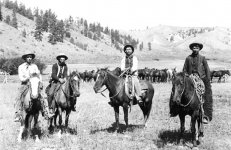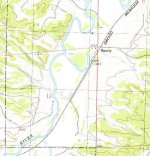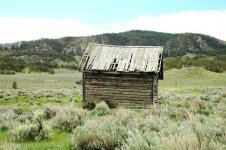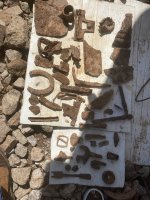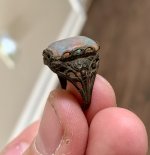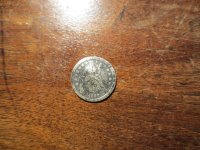This one is from our Custer Country book, part of the Lost Treasures of Montana series. It is called, "Could There Be More."
Golden Valley County, Montana, is also known locally as the “Big Coulee Valley.” This is because of the many deep ravines in the region. A section of the county, about eight miles south of Ryegate, was not only excellent ranch land, but a prime location for hiding out. The Big Coulee Creek runs through the valley between huge rimrock formations. This valley is five miles wide and fourteen miles long. There are only two outlets from the valley and the towering ravine walls are all but impossible to scale up or down.
The Horse Camp Ranch lost treasure site is said to have been to the east of Lavina. An old base camp of the 1879 Cattle Company, its purpose was for grazing stock; but many who came to the area were shady, outlaw type characters, like horse thieves, cattle rustlers, and assorted other criminals. Because of this, the area just might hold some old hidden caches from the days when it was used as a hideout!
These desperados were but a small portion of the inhabitants in the region. Legitimate cowboys worked from the camp, tending to the cattle and other livestock. There were rumors of hidden loot here. And, one day, some substance was added to the local talk, when a discovery was made by accident.
More Later ….
COULD THERE
BE MORE
Years ago, there was a place called Horse Camp Ranch in Golden Valley County. It was an out-lying camp of a much larger ranch operation that was known as the 1879 Cattle Company, also called “The 79.” BE MORE
Golden Valley County, Montana, is also known locally as the “Big Coulee Valley.” This is because of the many deep ravines in the region. A section of the county, about eight miles south of Ryegate, was not only excellent ranch land, but a prime location for hiding out. The Big Coulee Creek runs through the valley between huge rimrock formations. This valley is five miles wide and fourteen miles long. There are only two outlets from the valley and the towering ravine walls are all but impossible to scale up or down.
The Horse Camp Ranch lost treasure site is said to have been to the east of Lavina. An old base camp of the 1879 Cattle Company, its purpose was for grazing stock; but many who came to the area were shady, outlaw type characters, like horse thieves, cattle rustlers, and assorted other criminals. Because of this, the area just might hold some old hidden caches from the days when it was used as a hideout!
These desperados were but a small portion of the inhabitants in the region. Legitimate cowboys worked from the camp, tending to the cattle and other livestock. There were rumors of hidden loot here. And, one day, some substance was added to the local talk, when a discovery was made by accident.
More Later ….


